With regards towards Vatican II and its contributions to the development of Marian doctrine, I think it is prudent to begin with Newman and his statement that there was in the first ages no public and ecclesiastical recognition of the place which Mary holds in the Economy of grace; as this was reserved for the fifth century, as the definition of our Lord’s proper Divinity had been the work of the fourth. The controversy contemporary with which brought out the complement of the development supplied the subject of that august proposition of which Arianism had provided the predicate. In order to do honor to Christ, in order to defend the true doctrine of the Incarnation, in order to secure a right faith in the manhood of the Eternal Son, the Council of Ephesus determined the Blessed Virgin to be the Mother of God (Cardinal Newman, 1989, 145).
Vatican Council II stated very vividly that wishing in his supreme goodness and wisdom to effect the redemption of the world, “when the fullness of time came, God sent his Son, born of a woman…that we might receive the adoption of sons” (Gal 4:4). “He for us men, and for our salvation, came down from heaven, and was incarnated by the Holy Spirit from the Virgin Mary” (Creed of the Roman Mass). This divine mystery of salvation is revealed to us and continued in the Church, which the Lord established as his body. Joined to Christ the head and in communion with all his saints, the faithful must in the first place reverence the memory “of the glorious Virgin Mary, Mother of God and of our Lord Jesus Christ” (Cannon of the Roman Mass) (O.P. Flannery, 1998, 413).
The doctrine is being developed in order to properly demonstrate (not only by Newman but also with the Council) the proper and most appropriate place or status of Mary, the Mother of God. How ironic, that from the beginning this was not actually already established, that it (the doctrine) wouldn’t even begin until the 5th century and continue onwards into the 20th century with Vatican Council II for the “refining” of this doctrine. It is revealed within the New Testament that inside the public life of Jesus, Mary appears prominently; at the very beginning when at the marriage feast of Cana, moved with pity, she brought about by her intercessions the beginning of miracles of Jesus the Messiah (Jn 2:1-11). In the course of her Son’s preaching she received the words whereby, in extolling a kingdom beyond the concerns and ties of flesh and blood, he declared blessed those who heard and kept the word of God (Mk 3:35; Lk 11:27) as she was faithfully doing. Thus, the Blessed Virgin advanced in her pilgrimage of faith, and faithfully persevered in her union with her Son unto the cross, where she stood, in keeping with the divine plan, enduring with her only begotten Son the intensity of his suffering, associated herself with his sacrifice in her mother’s heart, and livingly consenting to the immolation of this victim which was born of her. Finally, she was given by the same Christ Jesus dying on the cross as a mother to his disciple, with these words: “Women behold thy son” (Jn 19:26-27) (O.P. Flannery, 1998, 417).
The Catechism teaches that Mary’s role in the Church is inseparable from her union with Christ and flows directly form it. “This union of the mother with the Son in the work of salvation is made manifest from the time of Christ’s virginal conception up to his death” it is manifest above all at the hour of his Passion. After her Son’s Ascension, Mary “aided the beginnings of the Church by her prayers.” It is within her association, Mary, with the apostles and several women, “we also see Mary by her prayers imploring the gift of the Spirit, who had already overshadowed her in the Annunciation” (Catechism of the Catholic Church [CCC], 1994, §964 §965).
St. Justin, St. Irenaeus, and others, distinctly laid it down that Mary not only had an office, but bore a part, and was a voluntary agent, in the actual process of redemption, as Eve had been instrumental and responsible in Adam’s fall, thus they taught that, as the first woman might have foiled the Tempter and did not, so, if Mary had been disobedient or unbelieving on Gabriel’s message, the Divine Economy would have been frustrated. And certainly the parallel between the Mother of all living and the Mother of the Redeemer may be gathered from a comparison of the first chapters of Scripture with the last (Cardinal Newman, 1989, 415).
Vatican Council II expounded more upon this by teaching of the motherhood of Mary in the order of grace continues uninterruptedly form the consent which she loyally gave at the Annunciation and which she sustained without wavering beneath the cross, until the eternal fulfillment of all the elect. Taken up to heaven she did not lay aside this saving office but by her manifold intercession continues to bring us the gifts of eternal salvation. By her maternal charity, she cares for the brethren of her Son, who still journey on earth surrounded by dangers and difficulties, until they are led into their blessed home. Therefore, the Blessed Virgin is invoked in the Church under the titles of Advocate, Helper, Benefactress, and Mediatrix. This however, is so understood that it neither takes away anything from nor adds anything to the dignity and efficacy of Christ the one Mediator (O.P. Flannery, 1998, 419). By her complete adherence to the Father’s will, to his Son’s redemptive work, and to every prompting of the Holy Spirit, the Virgin Mary is the Church’s model of faith and charity. Thus, she is a “preeminent and…wholly unique member of the Church; indeed, she is the exemplary realization (typus) of the Church” (CCC, 1994 §967).
The Church does not hesitate to profess the subordinate role of Mary, which it constantly experiences and recommends to the heartfelt attention of the faithful, so that encouraged by this maternal help they may the more closely adhere to the Mediator and Redeemer. By reason of the gift and role of her divine motherhood, by which she is united with her Son, the Redeemer, and with her unique graces and functions, the Blessed Virgin is also intimately united to the church. As St. Ambrose taught, the Mother of God is a type of the Church in the order of faith, charity, and perfect union with Christ. For in the mystery of the Church, which is itself rightly called mother and virgin, the Blessed Virgin stands out in eminent and singular fashion as exemplar both of virgin and mother. Through her faith and obedience she gave birth on earth to the very Son of the Father, not through the knowledge of man but by the overshadowing of the Holy Spirit, I the manner of a new Eve who placed her faith, not in the serpent of old but in God’s messenger without wavering in doubt. The Son whom she brought forth is he whom God placed as the first-born among many brethren (Rom 8:29), that is, the faithful, in whose generation and formation she cooperates with a mother’s love (O.P. Flannery, 1998, 420).
Mary’s function as mother of men in no way obscures or diminishes this unique mediation of Christ, but rather shows its power. But the Blessed Virgin’s salutary influence on men flows forth from the superabundance of the merits of Christ, rests on his mediation, depends entirely on it, and draws all its power form it. No creature could ever be counted along with the Incarnate Word and Redeemer; but just as the priesthood of Christ is shared in various ways both by his ministers and the faithful, and as the one goodness of God is radiated in different ways not exclude but rather gives rise to a manifold cooperation which is but sharing in this one source (CCC, 1994 §970).
While in the most Blessed Virgin the Church has already reached that perfection whereby she exists without spot or wrinkle (Eph 5:27), the faithful still strive to conquer sin and increase in holiness. And so they turn their eyes to Mary who shines forth to the whole community of the elect as the model of virtues. Devoutly meditating on her and contemplating her in the light of the Word mad man, the Church reverently penetrates more deeply into the great mystery of the Incarnation and becomes more and more like her spouse. Having entered deeply into the history of salvation, Mary, in a way, unites in her person and re-echoes the most important doctrines of the faith: and when she is the subject of preaching and worship she prompts the faithful to come to her Son, to his sacrifice and to the love of the Father. Seeking after the glory of Christ, the Church becomes more like her lofty type, and continually progresses in faith, hope and charity, seeking and doing the will of God in all things. The Church, therefore, in her apostolic work too, rightly looks to her who gave birth to Christ, who was thus conceived of the Holy Spirit and born of a virgin, in order that through the Church he could be born and increase in the hearts of the faithful. In her life the Virgin has been a model of that motherly love with which all who join in the Church’s apostolic mission for the regeneration of mankind should be animated (O.P. Flannery, 1998, 421).
It is very evident, that the Church has been and will continue to expound upon this doctrine of our faith. Mary is much more than (as some of my Protestant friends contend) “a woman” or just the “mother of Jesus.” We can truly see the significance of Mary and her role in our redemption through her son Jesus. Mary is more than worthy of not only our gratitude but more so, of our praise and deep recognition for her vital “role” within our salvation.
Hail Mary full of Grace, the Lord is with you, blessed are you among women and blessed is the fruit of your womb Jesus, Holy Mary, Mother of God, Pray for us sinners now and at the hour of our death Amen.
References
Cardinal Newman, J. H. (1989). An Essay on the Development of Christian Doctrine. Notre Dame, Indiana: Notre Dame Press.
Catechism of the Catholic Church (1994). Catechism of the Catholic Church. New Jersey: Paulist Press.
O.P. Flannery, A. (1998). Vatican Council II Volume 1 The Conciliar and Post Conciliar Documents. New York: Castello Publishing .
Christian Education
"Since all Christians have become by rebirth of water and the Holy Spirit a new creature(8) so that they should be called and should be children of God, they have a right to a Christian education. A Christian education does not merely strive for the maturing of a human person as just now described, but has as its principal purpose this goal: that the baptized, while they are gradually introduced the knowledge of the mystery of salvation, become ever more aware of the gift of Faith they have received, and that they learn in addition how to worship God the Father in spirit and truth (cf. John 4:23) especially in liturgical action, and be conformed in their personal lives according to the new man created in justice and holiness of truth (Eph. 4:22-24); also that they develop into perfect manhood, to the mature measure of the fullness of Christ (cf. Eph. 4:13) and strive for the growth of the Mystical Body; moreover, that aware of their calling, they learn not only how to bear witness to the hope that is in them (cf. Peter 3:15) but also how to help in the Christian formation of the world that takes place when natural powers viewed in the full consideration of man redeemed by Christ contribute to the good of the whole society.(9) Wherefore this sacred synod recalls to pastors of souls their most serious obligation to see to it that all the faithful, but especially the youth who are the hope of the Church, enjoy this Christian education."
Gravissimum Educationis
Gravissimum Educationis
Thursday, March 19, 2009
Subscribe to:
Post Comments (Atom)






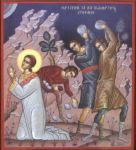







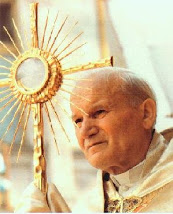

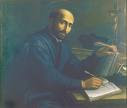




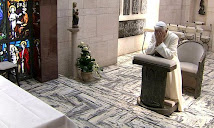




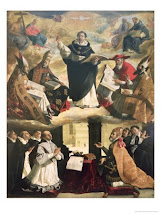
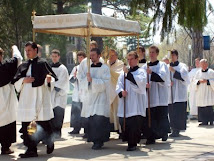

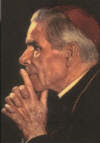

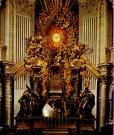
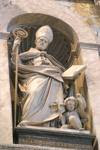



No comments:
Post a Comment